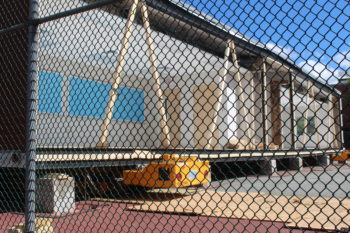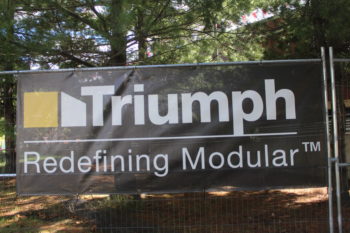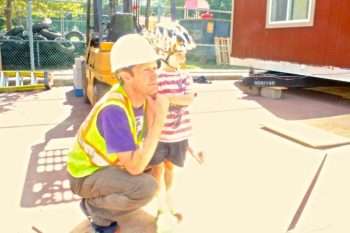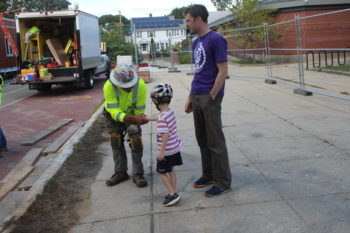Photo: One of the modular units at the Burbank.
To the editor:
If you’re like me, you really love living here in Belmont. I’ve yet to find another suburb of Boston that has quite the same small-town community feel. Belmont residents – from those who have lived here their entire lives to those who are newly arrived – know how special our community is, and understand the importance of preserving and nurturing what makes Belmont unlike any other town in Massachusetts. Investing in our community with a YES vote in support of the 7-12 school preserves and protects what has made Belmont so special all these years.
On Nov. 6, it is up to all of us to decide what kind of town we want to be moving forward. Do we want to preserve what we love about the Belmont community by investing in it, or do we want to stand idle with no sustainable solution to the increasing demands on our school system?
The reality is this: No matter what happens on Nov. 6, our taxes are going up to address the crisis of overcrowding and the dire needs of our high school. The decision we all have to make is where do I want my taxes going when it comes to our town’s education system?
- A NO vote means we’re paying an expected $247 million to rebuild and repair a crumbling, asbestos-filled high school building (that is not ADA compliant), along with overcrowded elementary schools and 48 modular trailers to house our children. 48 modulars! Are you wondering what 48 modulars look like? Take a walk behind the Burbank School and check out the monstrous structure that looms over half of the blacktop playspace. That is only four modulars. Imagine twelve times that number, all across our schools.
- A YES vote is an investment of $213 million (that’s right, it’s projected to cost $34 million less than the costs of a NO vote) to solve our overcrowding crisis while also ensuring our children are learning in up-to-date schools that provide a safe, supportive, nurturing environment.
Still undecided? Stop by that Burbank School blacktop one morning around 8:35 a.m. No, not to see the modular trailers, but to see the children waiting to enter the school. These kids are incredible. They are truly special, just like our town. And these kids, along with all of Belmont’s current elementary school children, would be the first students to step into the new 7-12 school once it opens. Join me in looking back on Nov. 6 as the day that you decided to invest in these kids and the future of our incredible town.
I hope you will join me in voting YES on Tuesday, Nov. 6th.
Reed Bundy
School Street
Town Meeting Member Precinct 1







